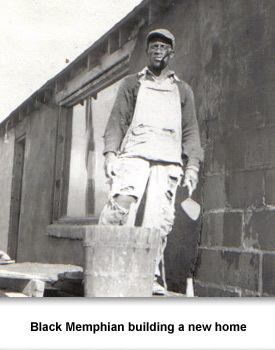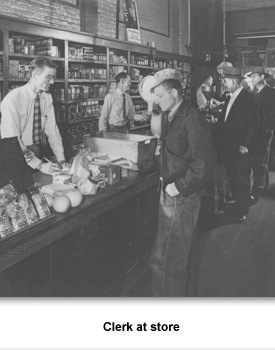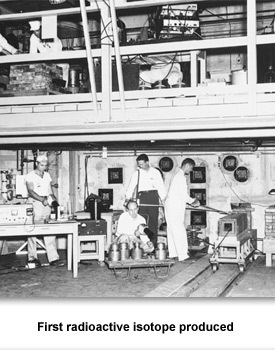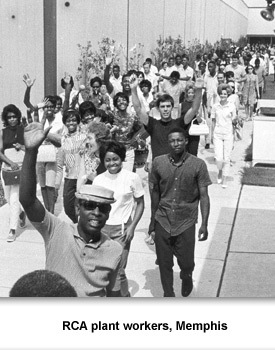Civil Rights / Cold War
How They Worked
By the late 1950s, the U.S. economy was the strongest in the world. Tennesseans along with other Americans enjoyed that prosperity.
Temporary military bases and war industries in the state remained open after the war because of the Cold War with the Soviet Union. This included the Atomic Energy Commission facilities at Oak Ridge and the Arnold Engineering Center in Tullahoma.
In addition, the G. I. Bill of Rights gave educational benefits to returning Tennessee veterans. Because of better training and education, men were able to obtain better-paying jobs. As families had more money, consumerism rose as Tennesseans took advantage of new post-war products.
Interstate highways were constructed throughout the state under the Federal Highway Act of 1956. This allowed goods to be more easily distributed. It also encouraged the expansion of the tourist industry.
But sometimes the construction of the interstates tore apart neighborhoods and caused rural areas not serviced by an interstate to become more isolated.
In 1960, for the first time, more Tennesseans lived in cities than in rural areas. The number of Tennesseans who lived on farms dropped drastically during this time. The number of farms also decreased, going from 158,000 in 1960 to 80,000 farms in 1987.
But even as the numbers of farm workers and farmers were decreasing, agricultural production was increasing. Modern technology, such as tractors and harvesters, and improved fertilizers and insect and weed control chemicals allowed agricultural businesses to expand.
As people had more money to spend, retail trade increased. Shopping malls, easily accessible by cars, became the destination point of shoppers instead of downtown areas. This caused urban decay in the cities as empty storefronts became commonplace.
Picture Credits:
- Photograph of RCA plant workers, Memphis, probably in the 1960s. University of Memphis Special Collections
- Photograph of a black Memphis man working in construction. After World War II, money provided by the federal government through the G. I. Bill gave more people an opportunity to buy a home, sparking a housing boom. Courtesy of the Pink Palace Museum
- A photograph of men cooking at the Paris Fish Fry in the 1950s. The self-named "World's Largest Fish Fry" was held each year to promote tourism in the area and the fishing industry. Tennessee Department of Conservation Photograph Collection, Tennessee State Library and Archives
- Oak Ridge scientists removed the world's first radioactive isotope produced for medical use from the reactor in 1946. This carbon 14 isotope was shipped to a hospital in St. Louis. Courtesy of the Oak Ridge National Laboratory
- A clerk at the Bemis Mercantile Store waits on a customer. Volunteer Voices, Jackson Business History Project Collection, Jackson-Madison County Library
- A photograph of the owner and employees of Britts' Shoe Store, located in Henderson County, in 1957. From left to right are Mitchell Britt, Graple Evans, Jo Ann Wadley, Sylvia Harrington Grissom, Betty Priddy Roberts, and Mary Britt. Published in the 2005 Henderson County, Tennessee Connections: A Pictorial History by Brenda Kirk Fiddler, photograph courtesy of Allan Fesmire
- A photograph taken in 1952 of Purity Dairies employees shoveling ice in a delivery truck to keep the milk cold. Later refrigerated trucks replaced this process. Purity Dairies and other milk processing companies delivered milk directly to consumers' homes during this era. Courtesy of Purity Dairies LLC
Civil Rights / Cold War >> Everyday Life >> How They Worked >>







 Sponsored by: National Endowment for the Humanities
Sponsored by: National Endowment for the Humanities